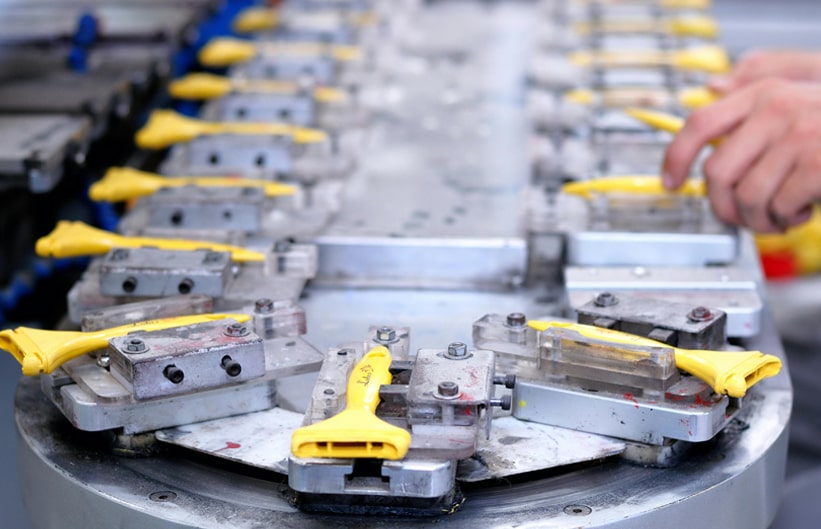An Overview
The engineering industry is the backbone of modern infrastructure, technology, and innovation. Over the years, engineers have continually adopted tools and technologies that enhance efficiency, precision, and creativity. With the rapid growth of immersive technologies like Virtual Reality (VR), the engineering industry stands on the cusp of another major transformation. VR’s ability to create interactive and three-dimensional environments has profound implications for design, training, and collaboration.
“Any sufficiently advanced technology is indistinguishable from magic.” - science fiction writer Arthur C. Clarke
VR is one such magical tool that brings a new level of realism and immersion to engineering processes.
VR Use Cases in The Engineering Domain
1. Enhancing Design and Prototyping
One of the most significant applications of VR in engineering is in design and prototyping. Traditional 2D designs or even 3D models on computer screens limit an engineer’s ability to truly immerse in a project. VR bridges this gap by allowing engineers to step into a virtual version of their design and interact with it in real time.
Instead of imagining how a component will fit or behave in the physical world, VR enables engineers to experience it. They can view their designs from every possible angle, detect flaws, and make adjustments before costly physical prototypes are developed. This shift accelerates the product development cycle and minimizes errors.
With over 15 years of expertise in new product design, iLenSys is ready to elevate your innovations to new heights. Our cutting-edge VR prototyping takes product design to the next level, allowing seamless collaboration between our skilled engineers and immersive tech team. Together, we bring your vision to life, delivering unmatched design excellence and accelerating your journey from concept to reality.
2. Improved Training and Skill Development
Training engineers on complex machinery or systems can be both time-consuming and risky. VR offers a safe and effective alternative. By creating virtual simulations of real-world scenarios, engineers can practice and learn in a controlled environment. This is particularly valuable in fields where mistakes can be costly or dangerous, such as aerospace, chemical, or nuclear engineering.
Moreover, VR training environments can be tailored to specific learning outcomes. For example, a trainee could practice emergency protocols in a VR environment, where making errors is part of the learning curve, without the actual risks involved.
At iLenSys, we've developed a dynamic learning solution tailored for engineering students and professionals, offering an engaging way to master and refresh their engineering knowledge. Our product simplifies complex concepts through captivating 3D animations and interactive emulators, while advanced VR experiences bring large equipment and intricate topics, such as wind turbines and power plants, to life. This immersive approach ensures a deeper understanding and a more impactful learning journey.
3. Facilitating Collaboration Across Geographies
In an increasingly globalized world, engineering teams often span multiple continents. Collaboration is essential, but coordinating across time zones and locations can be challenging. VR transforms this by allowing engineers from different parts of the world to work together in a shared virtual space. This creates a sense of presence and co-working that is far superior to traditional video conferencing or phone calls.
Source:freepik
Imagine a scenario where a team from India, Germany, and the U.S. can walk through a virtual plant, point out potential design flaws, and brainstorm solutions as if they were all standing in the same room. VR makes this a reality.
At iLenSys, we've partnered with global customers for years, delivering innovative product designs tailored to diverse needs across continents. Now, with our advanced VR capabilities, we take product visualization to the next level, allowing customers to experience the true scale and aesthetics of their designs before a physical prototype is even built. This game-changing technology eliminates geographical barriers, enabling seamless collaboration and accelerating the design process, no matter where you are in the world.
4. Streamlining Maintenance and Troubleshooting
VR is not just a tool for design; it is equally valuable for maintenance and troubleshooting. In industries where downtime can lead to substantial financial losses, such as manufacturing or oil and gas, VR can help engineers quickly diagnose problems and develop solutions.
Through VR-based remote support systems, engineers can connect to on-site teams, visualize machinery, and guide repairs or troubleshooting. This reduces the need for physical travel and allows for real-time assistance, drastically cutting response times. Additionally, digital twins—virtual replicas of physical systems—allow engineers to simulate and solve problems in the virtual environment before applying solutions to the actual equipment.
At iLenSys, our VR solutions enhance engineering productivity and efficiency, delivering significant time and resource savings for companies across diverse industries. Our immersive VR simulators for example transform engineering tasks by streamlining troubleshooting and eliminating downtime. This innovative technology not only boosts productivity but also redefines how teams approach challenges, empowering them to solve problems more effectively.
5. Environmental and Cost Benefits
One of the more understated advantages of using VR in the engineering industry is its positive impact on the environment. By reducing the need for physical prototypes, travel, and wasteful processes, VR contributes to a more sustainable engineering practice. With industries under increasing pressure to adopt eco-friendly methods, VR offers a way to reduce material waste and energy consumption.
Additionally, the cost-saving potential of VR cannot be ignored. From avoiding unnecessary prototypes to reducing travel expenses for global teams, VR provides a means to streamline budgets while still improving the quality of output.
At iLenSys, we’re all about using VR to transform the engineering industry for the better. Our team is dedicated to developing tools that not only enhance productivity and collaboration but also help companies operate more sustainably. Take our VR stalls, for example—they’re designed to support your goals while minimizing environmental impact and saving costs. We’re excited to blend innovation with a commitment to a greener future, and we believe our solutions can make a real difference.
Exploring Immersive Technology with iLenSys
At iLenSys, we believe that integrating Virtual Reality into engineering isn't just about keeping pace with technological trends; it's about unlocking a world of new possibilities for innovation, efficiency, and seamless collaboration. As we tackle increasingly complex challenges, VR empowers engineers to visualize, prototype, and troubleshoot in immersive environments, equipping them with the cutting-edge tools needed to stay ahead of the curve. To learn more about our services visit: https://www.iLenSys.com/services/extended-reality
Please Enter your Business Email to download the WhitePapers
ilensys needs the contact information you provide to us to contact you about our products and services. You may unsubscribe from these communications at any time. For information on how to unsubscribe, as well as our privacy practices and commitment to protecting your privacy, please review our Privacy Policy.
Talk to ours 3D Immersive Tech Experts.
By submitting this form, I agree to receive emails about iLenSys's products and services as per the Terms of Use. I can unsubscribe at any time via the 'unsubscribe' link in iLenSys emails or by emailing contact@ilensys.com. I also agree to the Privacy Policy.
Sign up for the latest Blogs, Case studies, Whitepapers, Webinars and Videos.
- Blogs
- Case Studies
- News and Updates
- Videos
- Webinars
- White Papers
-
- Product Environmental Compliance
- Obsolescence Management
- Regulatory & Product Safety
-
-
-
-
-
-
- New Product Development
- Mechanical Design
- FEA Validation
- Benchmarking and Value Engineering
- 3D Scanning and Reverse Engineering
- 3D Printing
-
- Embedded Systems
-
- Industrial Automation
-
- Quality Assurance and Regulatory Affairs
-
- Extended Reality
- 3D Animation & Video Production
- WebGL Development
- Graphics and UI/UX Reality
-
- Technical Documentation
-
- Early Engineering Talent (EET)
-
-
-
- Lab Equipment
- Medical Devices and Equipment
-
- Scientific Instruments
-
- Life Sciences
-
- Static and Mobile Equipment
-
- Material Handling Equipment
-




